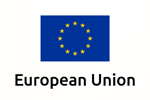Wooden monuments
Two Annas Metterza
The heroine of the two paintings in the church is St. Anne Metterza, i.e. the mother of the Mother of God. The nickname which comes form Old Polish means “in three” because depictions named this way show Anne in a company of Mary and Baby Jesus. It is the same in this church, although it needs to be pointed out that both images differ from each other.
The painting was finished over 420 years ago and tempera paints on board were used. An anonymous artist used Jan Sadeler’s, who was a famous artist from the Netherlands, copper engraving as a model. Apart form colors typical for the northern art, ornaments and sharp facial features, gilded details were added. The background, halos and elements of robes were covered with gold leaves in order to emphasize the holy character of the tale.
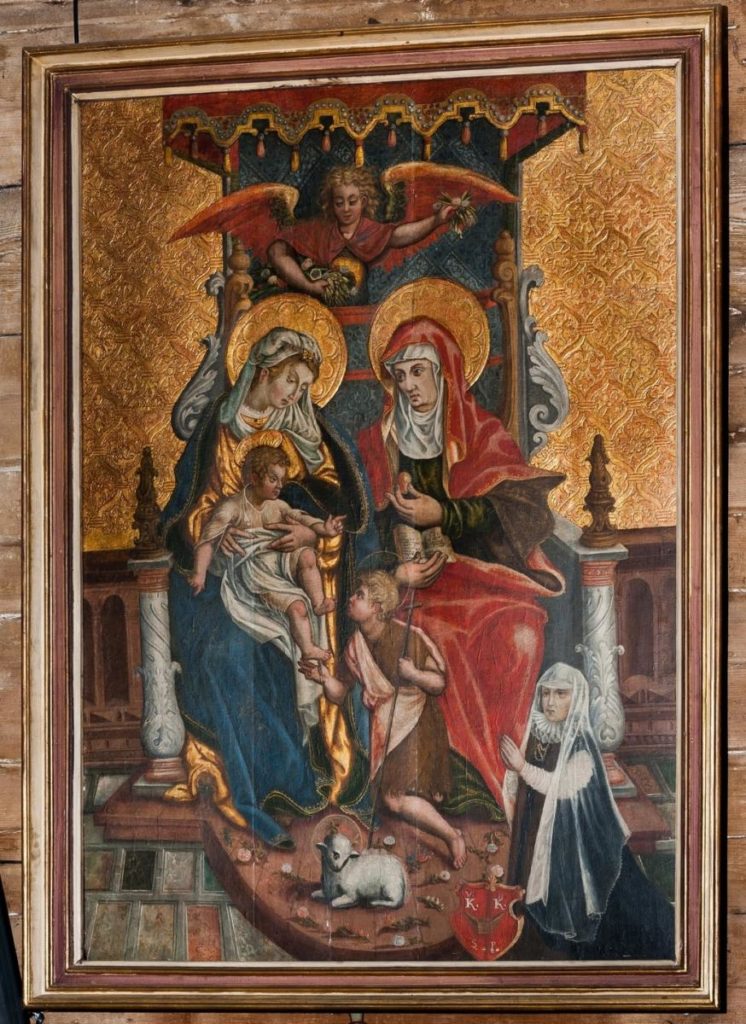
The painting has a symbolic character. Apart from the already mentioned three figures – Anne, Mary and Jesus – one can also spot a heavenly messenger who is throwing flowers on the holy women and also a young John the Baptist who is announcing the birth of the Lamb of God. It is worth to remember that it is a allegory because according to the Holy Bible John the Baptist first met Christ by the Jordan river where he baptized Him.
The last figure who has a hidden meaning is a kneeling woman in the right bottom corner. The founder (of the Konarski family), a person who financed the painting, wanted to immortalize herself in the artwork. Due to this common habit, generations to come can not only learn her face but also the noble family from which she came. It is enough to read the coat of arms (the Łodzia) correctly.
On the opposite side a more intimate image of the three family members is exhibited. The figures are sitting in a cozy, luxurious and grand room. Anne is absorbed in reading of the Holy Scripture, even though she is simultaneously holding Baby Jesus with her left hand.
Mary is hugging small Jesus and is giving him grapes – a symbolic anticipation of the Passion. One can notice close relations between the heroes of the image as well as tenderness and care. This makes the scene more private than in the previous painting.
Attempts of foreshortening, typical for the Renaissance period, e.g. in halo deformations painted at an angle according to the rules of axonometry are visible in the painting.
An interesting fact about the painting is a hardly visible, “chubby” face in the background under the curtain, which is supposedly a portrait of the artist.
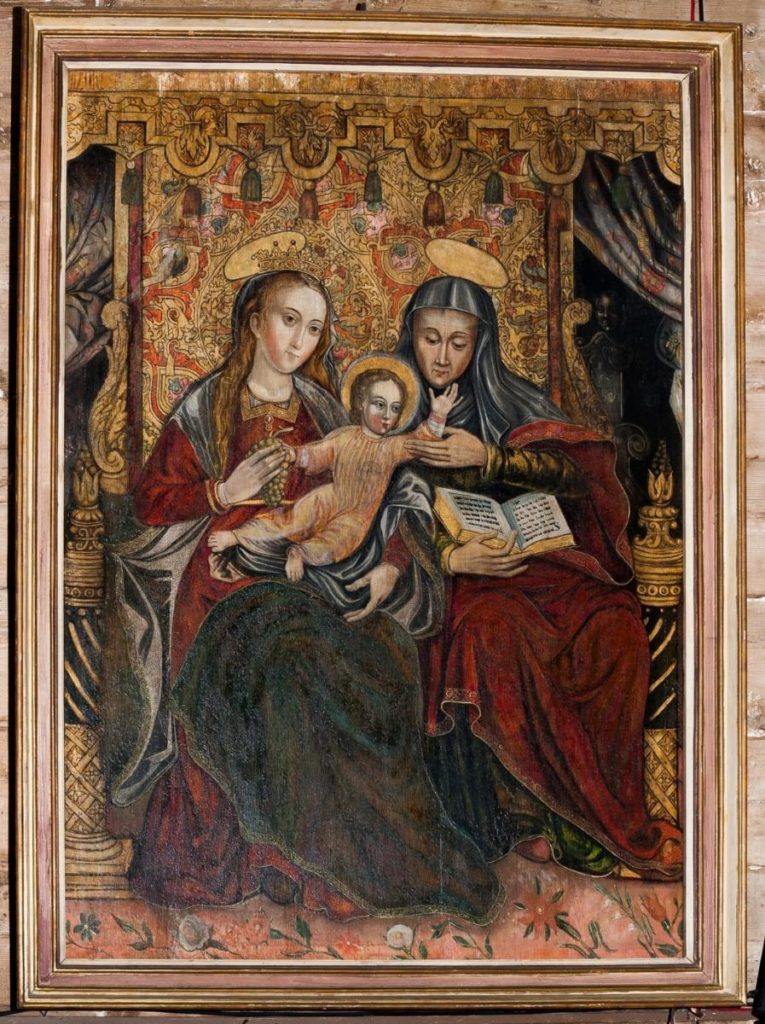
Gallery of carved figures of saints from wayside shrines
Inside the church one can admire an exhibition of carved statues of saints, which are figures originally from wayside shrines. All of them must have been made by folk artists. The statues come from the turn of 18th and 19th centuries. During the Second World War they were partially destroyed and required renovation. In 1968 all figures were moved to the church and they have stayed there ever since. This unusual collection includes images of:

Our Lady of Sorrows presented in a symbolic pose which refers to a prophecy of an old man Simeon: “so that the thoughts of many hearts will be revealed— and a sword will pierce your soul as well” (Luke 2, 35). Initially the statue was placed in a wayside shrine by the road in Kuklinowo;
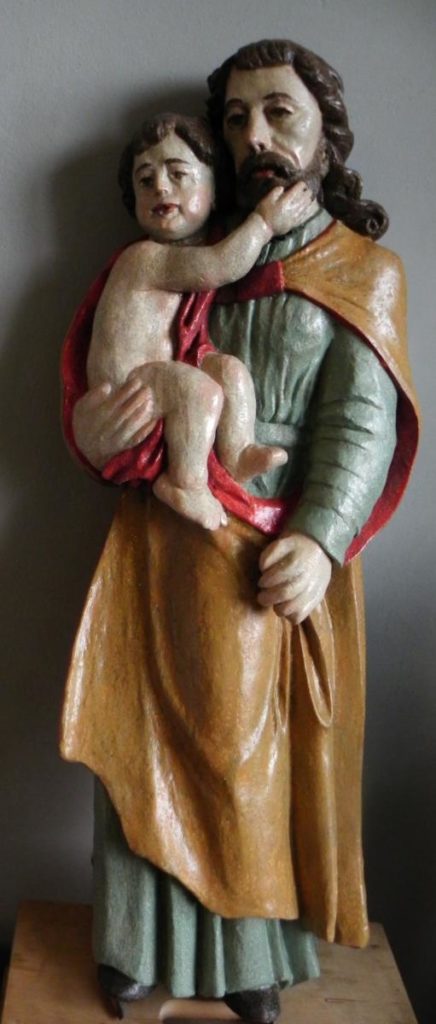
St. Joseph with Baby Jesus – patron saint of the Holy Family, of craftsmen (especially carpenters), the Bridegroom of Saint Virgin Mary. He is hugging Baby Jesus with care and the Baby is stroking His earthly father’s beard tenderly. Similarly to Our Lady of Sorrows, the figure of St. Joseph used to stand in the wayside shrine in Kuklinowo;
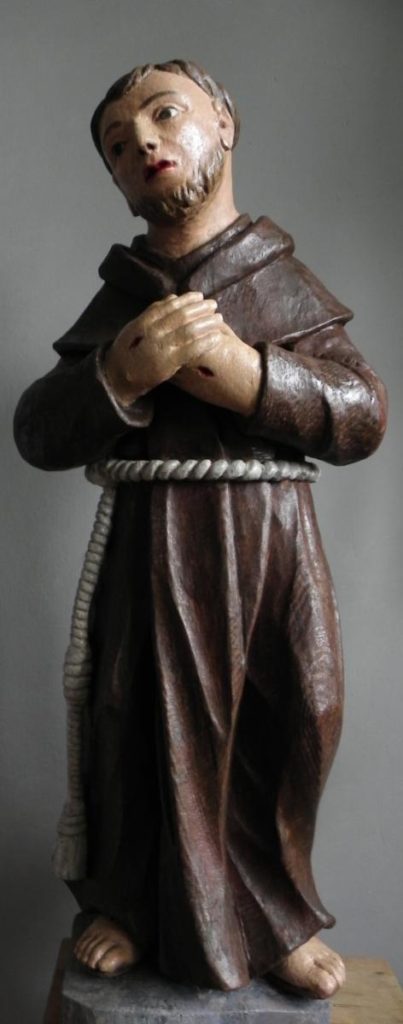
St. Francis who is presented here with stigmata. Wounds of the saint’s hands are the same as the ones on Christ’s body after nailing to the cross. Before the statue found its place to the church, it had been placed in a wayside shrine by the entrance to a courtyard of the grange in Starygród.
Wooden “triplets”
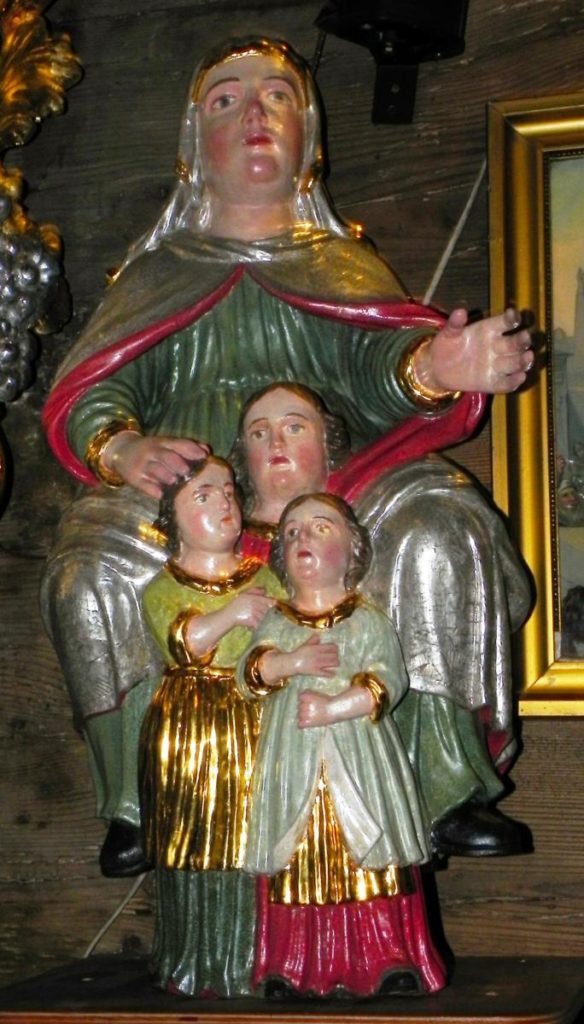
St. Sophia with her daughters was initially placed on the top of the main altar where she listened to pleas addressed to her. Now she sits with the daughters on a shelf in the nave and aids especially mothers and widows for whom she is patron saint. The names of the characters are symbolic and their origin is Greek – Sophia means “Wisdom” and her three daughters` names refer to theological virtues: Pistis means “Faith”, Elpis “Hope” and Agape “Charity”.
St. Sophia was a pious Christian widow and a martyr. She and her daughters were tortured because she did not want to offer sacrifice to a pagan goddess. For punishment she was made to watch her daughters being tortured. These three brave women are remembered on August 1.
Women under the Cross
On the border of the chancel and the nave there is a rood beam. It has a symbolic character and refers to a biblical text: it is a symbol of the covenant between God and people. Since the Middle Ages, on this kind of a “shelf” a sculpture of Crucifixtion Group, i.e. the rood, and accompanying figures of Our Lady of Sorrows and usually St. John the Apostle, were placed.
We can see a unique situation in the church in Starygród: two women are accompanying Christ who hangs on the cross. Instead of St. John the Apostle, the figure of Mary Magdalene was shown. She is presented in a kneeling position. Her hair is loose and she is wiping tears with one hand.
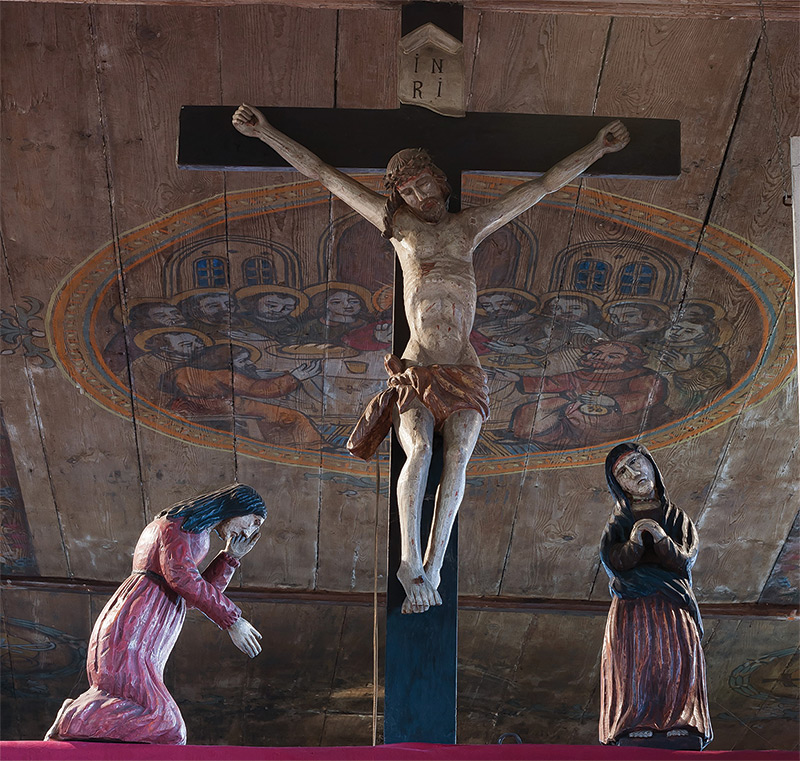

- The crucifix with Christ comes from the 18th century, however the figures of Our Lady of Sorrows and Mary Magdalene are younger, dated to the second half of the 19th century.
- The drama of the scene was shown in a simple, folk way: death in front of the closest ones. A sculptor showed tears on the faces of Mary and Mary Magdalene.
Baptist angel
The baptismal font was made in the Baroque period by local artists. A full-bodied figure of an angel who is kneeling on a trunk is a result of experiments conducted by the artists with wood material. The angel is holding the font with a figure of the lamb on the top. Spread wings and slightly elevated right hand make an impression of movement. The messenger of heaven has just left the Kingdom of God to take part in the sacrament of baptism.
What impression did the unusual font make on the faithful? How many baptisms did the angel witness? For almost 300 years of the figure’s existence twelve generations of people of Starygród were baptized on the angel’s hands.
- The figure of the lamb on the top of the font refers to the words of John the Baptist who said upon the approach of Jesus to the Jordan river: “Look, the Lamb of God, who takes away the sin of the world!” (J 1, 29)
It is said that an artist sees the final work in a lump of unhewn wood. The angel was thus created first in the imagination of an artist, and later in a tiresome and long process a chisel sculptured fragments: meticulously arranged hair, feathers and robes.


Masses
niedziela po 5 sierpnia (Matki Boskiej Śnieżnej) oraz 2 lutego (Oczyszczenia Najświętszej Maryi Panny)


